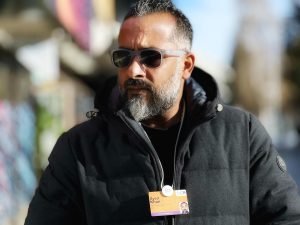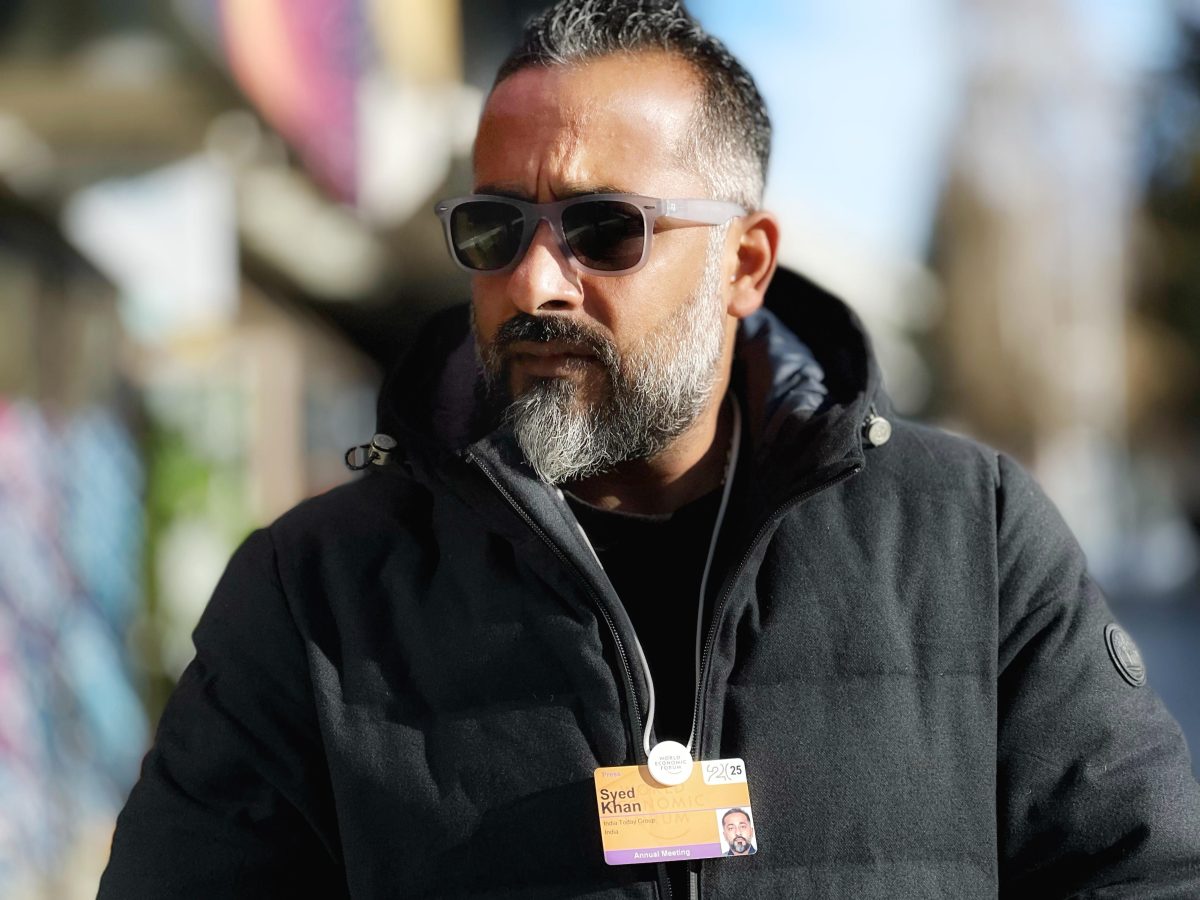1. Tell us something about your family background.
I come from a humble and academically inclined family. My father is a dedicated teacher who has always emphasized the importance of education and discipline. Being the eldest of three brothers, I have shouldered responsibilities from an early age, which has helped shape my leadership and decision-making skills. I completed my schooling at Amroha Government Inter College, where I developed a keen interest in visual storytelling. This passion led me to pursue a degree in Mass Communication from Jamia Millia Islamia, Delhi, which provided me with a strong foundation in media and photography. A passion for capturing real moments drove my photography journey, and working in a media company allows me to blend creativity with impactful storytelling.
2. Did someone inspire you to take up mass communication, or were you driven to do so?
I was always fascinated by the beauty of storytelling and how the media can shape public perception. While certain mentors and colleagues inspired me, it was a natural progression. I’ve always been curious, and the field of media seemed like the perfect way to channel that curiosity into something meaningful. It’s not just a job for me; it’s a passion. The ability to inform, entertain, and sometimes even challenge the status quo is what keeps me driven in this industry.
3. Where did you start your journey as a cameraman?
My journey as a cameraman began nearly two decades ago when I first stepped into the industry as an assistant cameraman. I was always passionate about capturing visuals that tell a story. That passion led me to freelancing opportunities in sports, reality shows, and large-scale events like the Commonwealth Games. Over the years, I honed my skills by working on diverse projects, understanding the technicalities of different formats, and adapting to the fast-paced nature of live broadcasting.
Eventually, my experience and dedication brought me to AajTak, where I now work as the Chief Cameraman and Director of Photography (DOP). Here, I oversee the visual execution of major news segments, special broadcasts, and exclusive interviews, ensuring top-notch production quality. My journey has been filled with learning, challenges, and growth, but my passion for storytelling through the lens remains as strong as ever.
4. Fourteen years is a long time to be associated with a brand. How rewarding has it been for you?
It’s been an incredible ride. It’s allowed me to work on amazing projects, meet incredible people, and witness history unfold. It’s been incredibly rewarding, both personally and professionally.
5. How difficult is it to disengage yourself from the story you cover? Covid coverage must be particularly challenging on a human level.
It can be challenging to disengage from a story, especially when it’s something that personally resonates or is emotionally charged. As a journalist, you often find yourself deeply immersed in the subject, whether it’s an important social issue or a human interest story. It’s part of the job to connect with the narrative to tell it effectively.
Maintaining a balance between empathy and objectivity is essential in my line of work. It’s natural to feel a connection to the stories and people you encounter, but allowing emotions to take over can cloud your judgment. Over time, I’ve learned to channel that emotional energy into more effective storytelling, ensuring that the focus remains on presenting the truth while still honouring the humanity of those involved.
COVID-19 coverage was incredibly challenging. As journalists, we’re trained to report facts and stay objective, but the pandemic was different. Covering stories of people wandering for oxygen, families unable to cremate their loved ones, or migrant workers walking thousands of kilometres was heart-wrenching.
It wasn’t just about delivering news; it was about connecting with the pain and resilience of humanity. At times, it felt overwhelming. We weren’t just witnesses to a crisis but part of it. Balancing professionalism with empathy became the key—because we’re human at the end of the day.
6. You’ve been covering the World Economic Forum for a while now. How different is the business coverage compared to other events?
Covering the World Economic Forum (WEF) differs from other business events. The scale and diversity of attendees make it unique. You have heads of state, CEOs of Fortune 500 companies, academics, activists, and even cultural figures all in one place. This creates a dynamic mix of perspectives you don’t often get at traditional business conferences.
What stands out is the broader focus. The conversations at WEF go beyond quarterly profits and market trends; they’re about systemic issues like climate change, global inequality, and technological disruption.
The other big difference is the pace and access. At the Forum, you might move from an exclusive CEO roundtable to a public session on sustainability, then to a quick interview in the corridors of Davos with a policymaker. It’s a whirlwind and an incredible opportunity to connect the dots between different sectors and regions.
7. What is closest to your heart from your work so far?
As a Chief Cameraman at AajTak, I have captured some of the most significant moments and stories that shape our world. Among all my experiences, the ones closest to my heart are those that combine visual storytelling with impactful journalism.
Vande Mataram” remains a project of immense pride, evoking deep patriotism and cultural resonance. Capturing the spirit of the nation through my lens has been an honour.
Covering the World Economic Forum has been an enriching experience, where I have documented global leaders, economic discussions, and policy shifts that influence nations. The depth and importance of these events make every frame meaningful.
My work in AajTak and India Today programming shoots has allowed me to bring groundbreaking news and engaging content to millions. Every shoot is a new challenge that refines my craft from in-depth political coverage to special features.
One of my most adventurous assignments has been “Motorcycle Diaries,” where the thrill of travel meets the art of storytelling. Filming the journey, landscapes, and untold stories of people across India has been an unforgettable experience.
Each project is unique in my career, shaping my passion for visual storytelling and reinforcing my commitment to bringing compelling narratives to life.
8. Amroha is your hometown and has also been the subject of some of your documentaries. What new aspects of the city have you tried to bring to the fore?
Amroha holds a deeply personal connection; it’s not just my hometown but also a repository of rich history, diverse traditions, and cultural layers that have shaped its identity over the centuries. While Amroha is often associated with its renowned intellectuals, poets like Jaun Elia, and its profound spiritual traditions, I’ve always felt that the everyday stories, the nuances of communal harmony, and the lived experiences of its people often go unnoticed.
In my documentaries, I’ve tried to shift the lens to highlight these subtler aspects. For example, beyond the grandeur of Muharram in Amroha, I’ve focused on how this observance fosters unity within the community, transcending sectarian boundaries.
When it comes to Jaun Elia, while many celebrate his sharp intellect and unfiltered honesty, I’ve tried to explore how the ethos of Amroha influenced his worldview and creative expression. From the quiet lanes he walked to the dialects he heard, these microcosms of Amroha permeate his poetry in ways that often go unacknowledged. I have aimed to present Amroha not just as a backdrop to his genius but as a living, breathing force that continues to inspire.
Ultimately, I hope these documentaries encourage audiences to see Amroha as a city of traditions and a space where history, culture, and individual stories converge to create something timeless.
 Mohsin Taqvi developed a keen interest in visual storytelling from an early age and took up photography professionally. He is currently the Chief Cameraman and Director of Photography (DOP) at AajTak. Mohsin’s numerous assignments include the World Economic Forum at Davos, Switzerland (since 2018), the Motorcycle Diaries, and the Covid-19 outbreak. He holds a degree in Mass Communication from Jamia Millia Islamia, Delhi.
Mohsin Taqvi developed a keen interest in visual storytelling from an early age and took up photography professionally. He is currently the Chief Cameraman and Director of Photography (DOP) at AajTak. Mohsin’s numerous assignments include the World Economic Forum at Davos, Switzerland (since 2018), the Motorcycle Diaries, and the Covid-19 outbreak. He holds a degree in Mass Communication from Jamia Millia Islamia, Delhi.
